Southeast Michigan has had two winter storms in as many weeks. Instead of encapsulating ice, this last storm produced very heavy, wet and icy snow. With winds gusting to 40 mph. The storm started around 1:00 p.m., and by mid-afternoon Friday, a thin but 10-foot-long sycamore branch lay across our driveway.
The Silver Lining: Something Special
Toward evening, suddenly, a wild ball of light blindingly flashed, reflecting against all the white outdoors. I assumed it was a transformer blowing and held my breath, waiting for the darkness to descend again. However, I was surprised, instead, to hear the flash followed by a large rumble of thunder. And again! This was a rare thundersnowstorm we were having.
Gone
A few times, given the wind blowing the wintry mix, it was like looking through a thick white fog to see the street. After one big gust, I was shocked to see what wasn’t there. Gone was one of a pair of the 15-foot Bradford pear trees we had purchased from the city and had planted on our park lawn, maybe a dozen years ago after the city removed a failing Norway maple. Now, the tree’s entire length was stretched across the westbound portion of the boulevard, the top of its crown resting on the median strip.
I made a non-emergency call to the police to report the tree’s demise as our street is a route for emergency vehicles. Judging from the number of sirens we could hear between the wind, the thunder, and the icy snow falling off trees onto our roof, emergency vehicles were going to need to get through.
Midnight Mime
However, the prone pear tree was still serving as a complete and total road blockade after midnight when I watched a man–bundled in more winter weatherwear than I could catalog here, all topped by a bike helmet–park his fat-tire bike with its headlight illuminating the thicket of the pear tree’s branches. As I watched from beside a window, he attempted to pull the tree off the street from every side. Was he swearing? No sound. I felt like I was watching a mime. His efforts would have made a very comical TikTok video. He made absolutely no progress before taking several minutes to readjust his clothing and then riding off to check on a car stopped midway up an icy hill.
What Remained
In the morning, examining all that was left of the tree–the tree’s five-inch-in-diameter stump surrounded by small drifts of sawdust–I could see why the man had had had no success in budging the tree. It had, apparently, been uprooted by the weight of the ice and snow on its branches; the trunk was still attached to the roots. The tree had fallen due south into the street, still attached to its roots, some of which had pulled up the wedge of soil in which they had been growing for over a decade. Loose in the soil was a grape hyacinth bulb with a two-inch green sprout pointing in the wrong direction.
A Few Things to Know About Bradford Pear Trees
In the spring, Bradford pear trees, loaded with white flowers, look like fairyland trees.
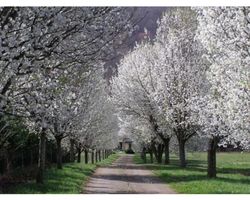
However, their sweet-looking blossoms are foul-smelling.
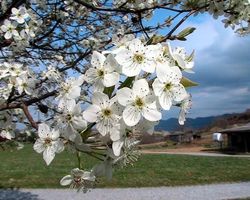
In the summer, the leaves, shiny green on top, unfurl as elongated hearts.
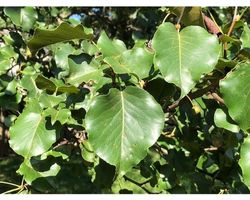
by Farmartin
In the fall, the leaves turned a deep reddish-purple . . .
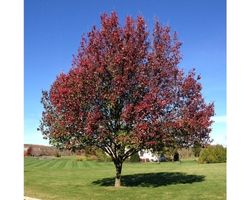
. . . and then hang onto the trees as brown shadows of their former selves into December.
Bradford Pear Bans
The Bradford pear tree–a popular cultivar of the Callery pear (Pyrus calleryana), named after the Italian-French Joseph-Marie Callery (1810 – 1862), a student of Chinese, who sent the specimens of the pear tree from China to Europe–was introduced in the mid-1960s.
Bradford pears are ornamental; the cultivar was created to not bear pears. However, cross-pollination with other pear trees that do produce pears has become problematic–all the Bradford and Callery’s bad characteristics show up. In addition to foul-smelling flowers, the Callery’s thorns (strong enough to puncture vehicle tires) surface in the hybrids.
Since the beginning of this century, Bradford pear trees have become invasive, choking out native species in natural areas. Ohio is the first state, as of this year, to ban the growing, planting, or selling of Bradford pear trees. South Carolina has enacted a ban on new Bradford pear sales effective on Oct. 1, 2024. A ban on the sale and cultivation of the tree in Pennsylvania will also take effect in February 2024.
Structural Issues
I hate losing any part of any tree, but I have been expecting these trees’ early demise after seeing the fate of other members of the species in our neighborhood.
The Bradford cultivar was supposed to be a small tree but ended up outgrowing that forecast by a lot, sometimes reaching a height of 30 to even 60 feet, depending on where they’re planted.
The two particular Bradford pear trees, with whom I’ve been sharing land, became two giant columns, growing at the rate of about a foot a year, reaching up into spaces left between the crowns of the trees in the surrounding canopy for their bit of sun.
The species’ structural issues became known only after landscapers and municipal planters, who highly recommended planting the species when it first became available, ensured there were a lot of specimens from which to extrapolate data. The Bradfords’ habits include bunches of weak branches growing from the same section of the trunk. This structure makes the trees vulnerable to heavy snowstorms, ice storms, and wind storms. But the trees can also split on their own without the help of any weather factors.
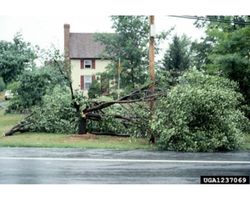
Over the years, one of my walking friends and I have witnessed several Bradford pear trees at different dawns, split down the middle or with a branch comprising one-quarter or more of the often heart-shaped crown (when sun is plentiful) just hanging down from the trunk.
Bradford Pear #2
Which is what I discovered when I checked out the pear tree that was still standing Saturday morning. The top five feet of the tree’s trunk was split off from one of the two main trunks and hanging downward. The divided main trunk had been more vulnerable to splitting from the beginning; I had expected this westward one to go first. The tree will have to be taken down as it now presents an even greater risk in the next storm.
So, sadly, we will have lost two trees to the storm . . .
The Other Half of the Story
. . . but while the storm had been still raging, I was further exploring a discovery I had made just the day before.
The Box
Sunday, my mom had given me a metal box measuring 11″x 8″ x 4.” She had found it back out of sight on a high shelf of a clothes closet in her bedroom. She remembers my dad putting it there while they were moving into their condo in 2018. It appeared to be a vintage fireproof box holding important documents that had belonged to my paternal grandparents, Bernard and Luella Dunphy, and my mom wanted me to have a look at what was inside. The box was unlocked, so Thursday when I took the first day off I can remember taking in a long time, it seemed the perfect opportunity to have a look.
The Important-Documents Contents
Half of the stack of papers dealt with big events in my paternal grandparents’ life, represented by:
- life insurance certificates
- warranty deeds and real estate transfers (including the transfer of 14567 Blackstone in the Brightmoor-Hendry Subdivision originally transferred on January 31, 1931, about three months after my dad would have turned three when they moved from Army St.)
- A National Bank of Detroit deposit record book of my Grandma Dunphy’s
- My Grandpa Dunphy’s “Certificate of Social Insurance Award.” Grandpa Dunphy, who retired 11 months after I was born, was awarded $98.50 of monthly benefit after decades of work for Ford Motor Company (aka in the Detroit area as “Ford’s)
- Papers about their purchase of a mobile home after they left Blackstone and records of their rental agreements at Allen Terrace after they left the mobile home.
- A Last Will and Testament for each of them.
- Parkview Memorial Cemetery plot certificate of ownership
. . . As I was going through this stack, I realized that envelopes of financial statements had been slit open with the silver letter opener–one thing that I inherited from my Grandpa Dunphy–that I use every day and keep on my desk.
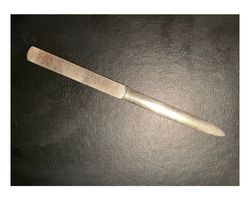
The More Interesting Contents
The other half of what’s in the stack of papers is more interesting. It includes:
- A small envelope labeled “Bill’s Baby Pictures”–Bill was my dad– that contains six black-and-white photos. The first one has no Baby Bill or anybody else in it. It is a photo of skinny sidewalks and skinny trees. On the back in faint pencil: “Christophers/Just got knocked out!”. Another photo is of my grandmother holding my dad in their Army St. neighborhood, which tonight I discovered is less than half a mile from Dragoon St., where my grandma grew up. Another picture features my dad in a lake near a dock. There is a picture of two boys and a wagon; on the back is written “Billy – Maurice in back yard Detroit Mich Aug 22 – 1932.” Then there is a more official-looking photograph with an art deco pattern around it. My dad is holding what looks like a wooden pull toy and is wearing long stockings, short pants, and what looks like black patent T-strap Mary Janes. He’s standing on a boardwalk instead of a sidewalk in front of the house. The address of the Blackstone house is visible on a column of the front porch before the front porch became a three-season porch with glass windows. Finally, there is a copy of a photo on typing paper of the family farm in Canada, taken in 1939, my dad would have been 12, his brother Maurice, three years younger, looks just his son, my Cousin Jimmy. Kevin and Keith Field are in the back row with them too, all in front a vintage car.
- An envelope of October 1959 newspaper clippings on the occasion of my dad merging his smaller Strathmoor Baptist Church with Lyle Adams’ larger Trinity Baptist Church where my dad would become the Minister of Education, Youth, and Music. My grandmother must have been very proud. At five years of age, I recall the newspaper photographer setting up the shot at the church door. We would move shortly after I turned six and was in the middle of first grade to the Detroit suburb of Livonia where the new Trinity Church would be built just a walk away from our new subdivision house.
- In a bright red envelope that claims to contain “Mother’s & Dad’s Birth Certificates” written in my grandma’s hand, I find an official document, not written in English with the date of June 23, 1908 and the amount of $500 entered in spaces for a date and an amount. On the back is written, “Mary M. Pierce” and “William A Pierce” (my Grandma Dunphy’s parents). I plan to figure out what this is.
The Even More Fascinating Items
- A baby book of my dad’s older brother who died before my dad was born, Bernard Joseph Dunphy, Jr. named after my Grandpa Dunphy. The book contains 12 loose B&W photos, 2 copies of Baby Bernard’s official 4-month-old baby photo, dates and notes about his developmental steps, and then another dozen photos of Baby Bernard pasted onto the photo pages. Bernard Jr. died of scarlet fever at three and a half years old.
- An autograph album–“The Aldine Autograph Album with decorated spaces and lines for sentiment and name.” On the back of the title page, my great-grandfather William A. Pierce states that my Grandma Dunphy, his youngest of three daughters is to inherit this book, which belonged to her mother, Mary Magdalene Winger. The first autograph in the book is dated March 30, 1884, when my Great-Grandmother Pierce would have been 17.
- A very strange picture of a woman created with dots on an oddly decorated piece of paper with very faded writing on the back of it; I have no idea what it is or what it might say. It is the kind of thing one might submit to The Detroit News “Trash or Treasure“ feature in the weekly Homestyle section.
- Finally, there is a small 5.5″ x 4.5″ off-white envelope labeled “Luella’s Birth cert. & Bernard birth” and “Dad’s account of family.” Neither of my paternal grandparents’ birth certificates is in the envelope. But inside are three cream-colored pages folded in thirds and completely filled with cursive writing in pencil, other than the typed heading on the first page: “Compiled by Wm. Arthur Pierce, Sept. 1935.” This would have been written less than 7 weeks before he died. Handwritten underneath this heading in the same hand, the same pencil as the rest of the pages: “Geneaology of GrandFather Arthur Pierce.” So this would be my great-grandfather William Arthur Pierce–after who, my dad was named–writing down what he knew of his own grandfather, Arthur Pierce. That would make Arthur Pierce my great-great-great grandfather.
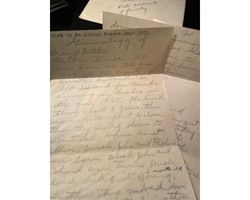
“Dad’s Account of Family”
Here are the highlights of my great-grandfather’s account of his grandfather’s life: Arthur Pierce was born in 1803 in the “County Conath” in Ireland. While there is no Irish county named “Conath”; Ireland does have four provinces, one of which is Connacht. Perhaps, that’s what he meant. The province of Connacht contains the counties of Galway, Leitrim, Mayo, Roscommon, and Sligo.
He emigrated from Ireland and settled in Quebec City in 1825. After he married Margaret Wilson, they moved down to Montreal, where they had a daughter and twin boys; one of the twins died at 3 months. They lived briefly in London, Ontario. They then settled on a farm in the Township of Euphemia near Shetland, Ontario where the rest of the family was born: great-grandfather Pierce’s father, William Fair Pierce, and 6 others (a total of 10 children, 9 of whom appear to have survived childhood.) Aunt Eliza, the youngest of Arthur Pierce’s 10 was still alive at age 81 when this genealogy was written.
Hitting Gold!
“In the year 1849, GrandFather Pierce together with others left Canada with ox teams and started for California in search of Gold; for that was the beginning of the great gold rush there.”
–William Arthur Pierce, September 1935
That would have been the second year of the gold rush. After about three years, Arthur Pierce returned to take his family back to California with him, but after hearing of the hardships he had endured with the Native Americans, his wife didn’t want to go, so he never went back.
A few years after his return from the gold rush, he went over to the Township of Brooke, Ontario and bought 200 acres of woods from the government on which to live. I wonder if this is the property the family farm was on. Arthur Pierce died on June 8, 1872, from “cancer of the stomach.”
The Pierce Branch
During the COVID-19 lockdown, I did not clean my closets, bake sourdough bread, or make TikTok videos. Instead, I did some gardening, worked on my tree book, and in service of doing research for one essay “From Royalty to Immigrant: The English Oak,” spent two very satisfying weekends going down the wormhole of genealogical research, with the help of ancestry.com, to learn more about my eight great-grandparents.
“It Made My Heart Thump . . . “
So I’d gotten back as far as my great-grandfather William Arthur Pierce in 2021, but in the past week, that Pierce branch of the Dunphy-Daly family tree has grown based on my great-grandfather William Arthur Pierce’s three-page genealogy. I now know who immigrated from where and when on the Pierce branch of my family tree.
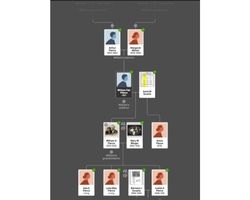
And I’m not sure why this one fact should tickle me quite so much, but it does: I know that my ancestor Arthur Pierce, the Irishman-turned-Canadian, participated in the California Gold Rush.
“On January 24, 1848, James Wilson Marshall, a carpenter originally from New Jersey, found flakes of gold in the American River at the base of the Sierra Nevada Mountains near Coloma, California.
“At the time, Marshall was working to build a water-powered sawmill owned by John Sutter, a German-born Swiss citizen and founder of a colony of Nueva Helvetia (New Switzerland, which would later become the city of Sacramento). As Marshall later recalled of his historic discovery: ‘It made my heart thump, for I was certain it was gold.’”
— “Gold Rush of 1849,” History.com
The March 3, 2023 Thundersnowstorm Tally
- Two Bradford pear trees lost
- One additional branch on the family tree gained
- And a whole lot of flash from above on the snow below!


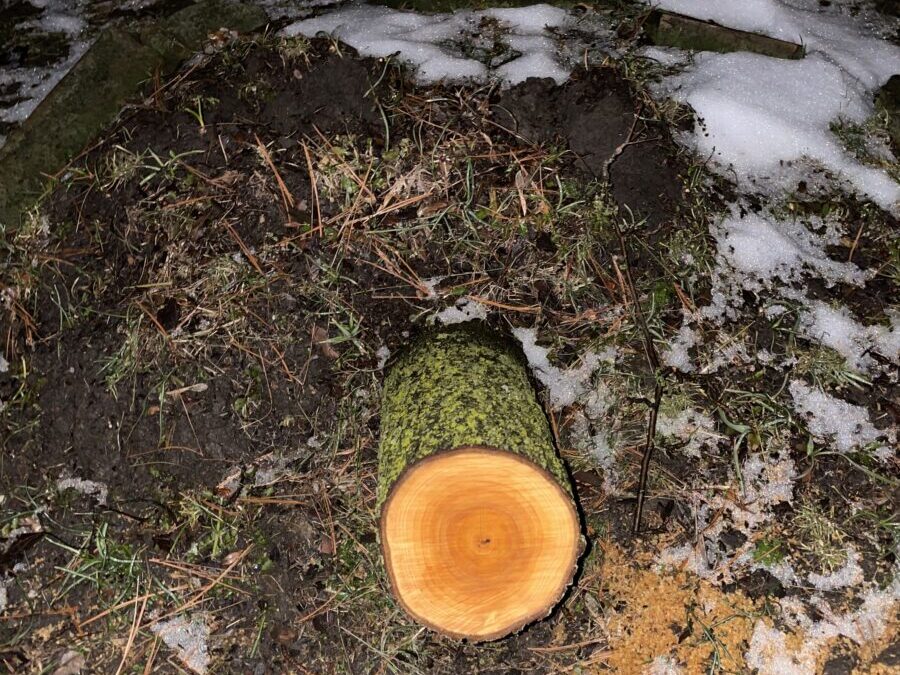
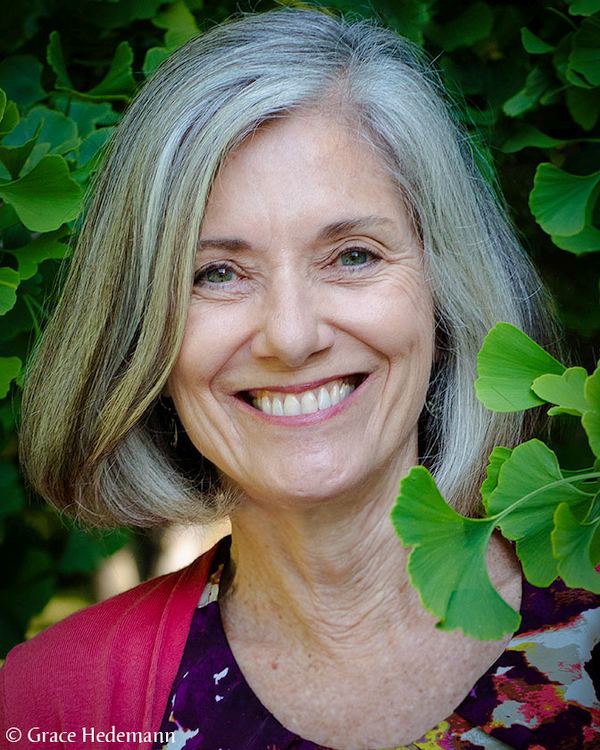
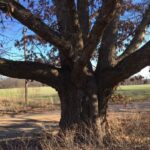
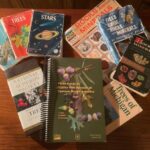
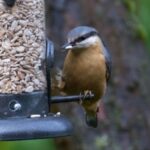


Love the connection of real tree branches and metaphorical branches on the family tree!
And I enjoyed reading some of your family history.
Thanks, Beth. It was quite the day for weather and genealogy!
Loved the branch story.
And, while always mourning the lost trees in a storm. It sounds like you lost suspicious characters.
Thanks, Mindy. Yes, suspicious characters, for sure. Just waiting to cause trouble.
Loved thus branch story, MD. And learning more about trees and you!
Thank you, Jen! Not sure how much more readers want to know about me. Quite a bit about my dad and his side of the family these last couple of weeks. A topic I’d not tired of writing about.